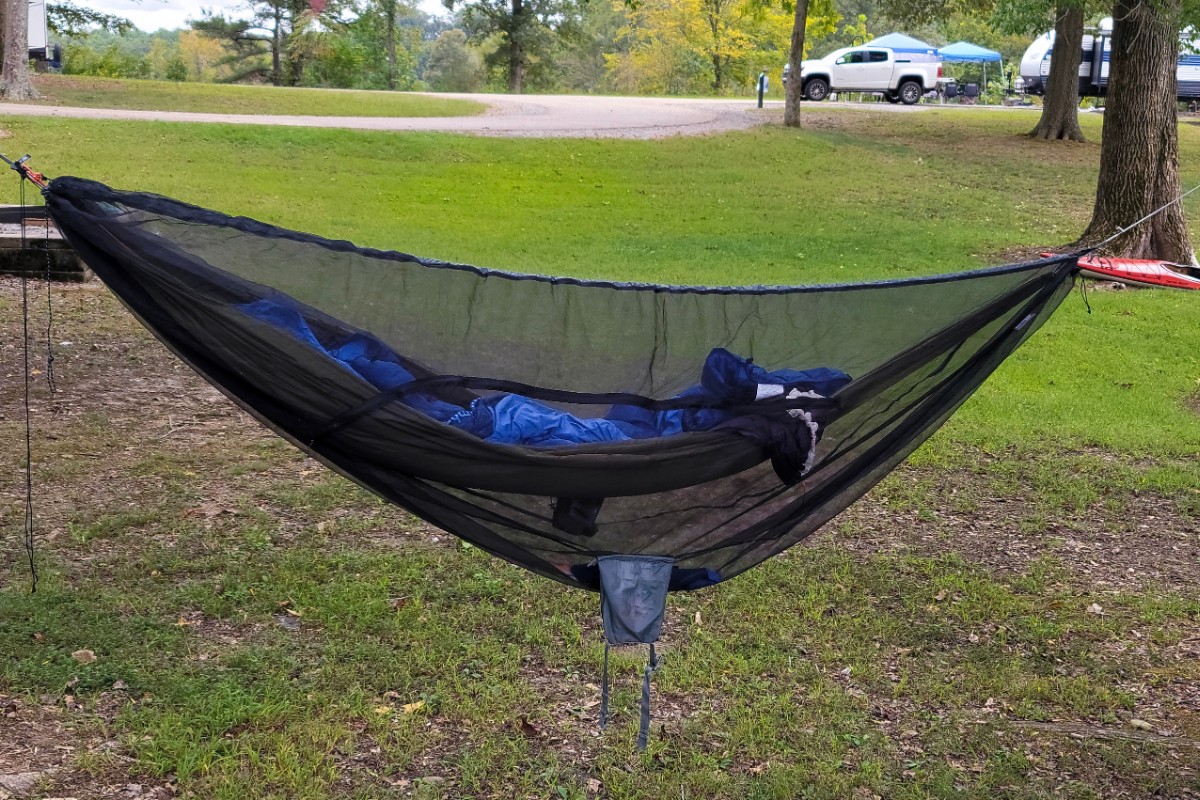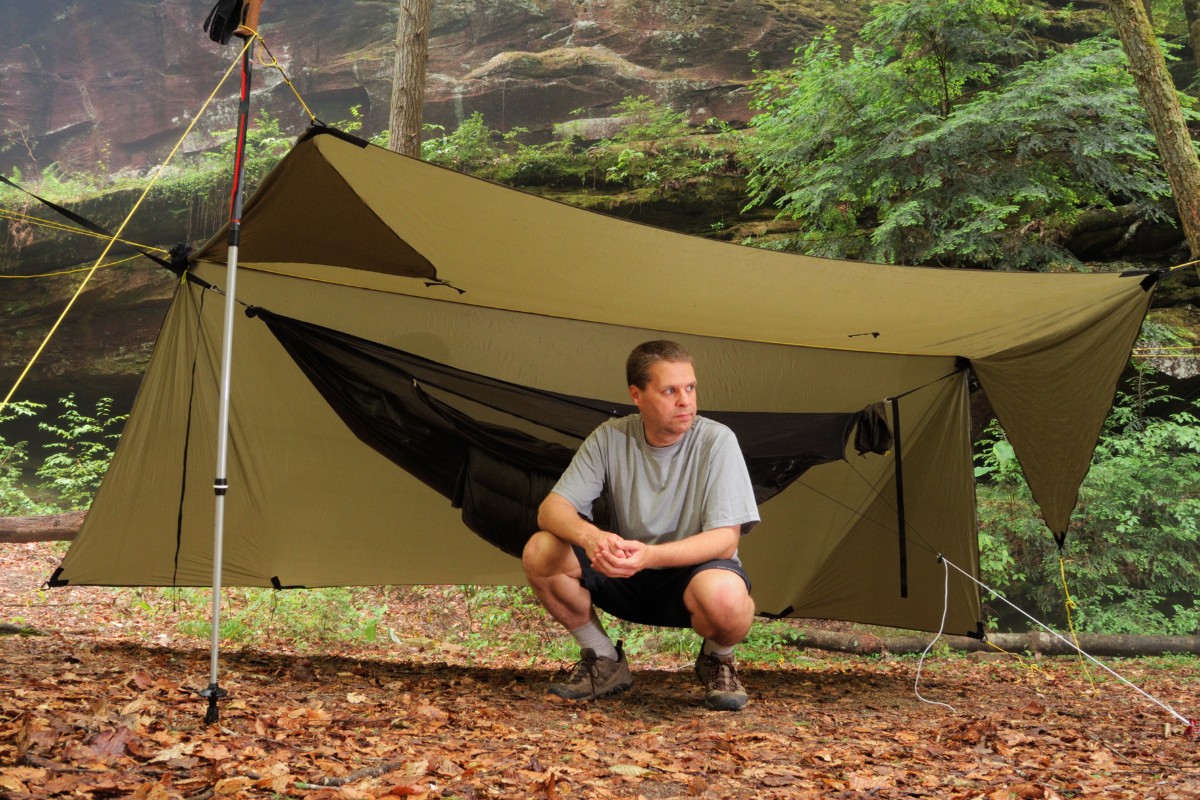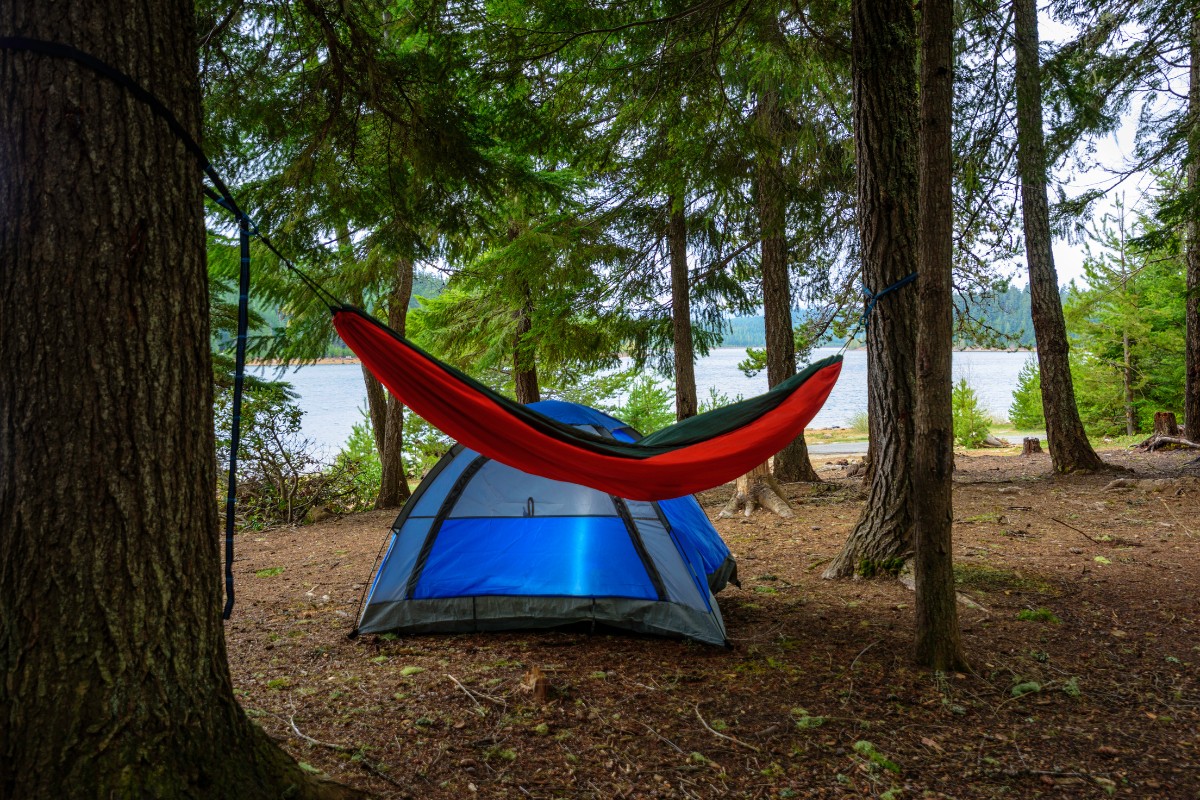For a gathered-end camping hammock, you might often hear the term “hammock ridgeline” or see a thin cord attached to each end of the hammock. This is the topic of the article: the hammock ridgeline, or more specifically, the structural hammock ridgeline.
What Is a Hammock Ridgeline
There are two types of hammock ridgelines used in camping hammocks:
Structural Hammock Ridgeline
A structural hammock ridgeline, abbreviated to “SRL,” is a thin cord tied to both ends of the hammock to create a consistent sag. It is tight, strong, and non-stretchy, allowing you to hang a hammock at a shallower angle—less than the optimal 30 degrees—when the trees are too far apart, but still get a comfortable flat lay. For a certain length of structural hammock ridgeline, the amount of hammock sag remains the same.
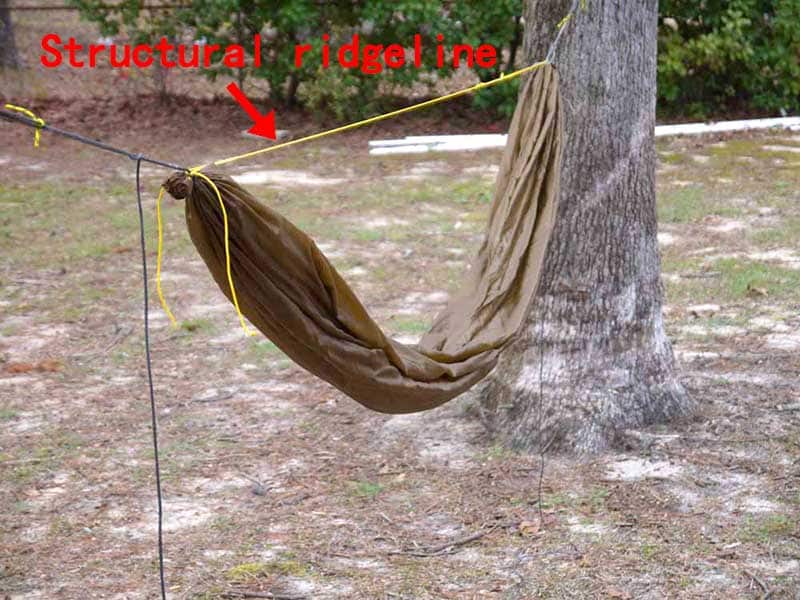
Non-Structural Hammock Ridgeline
A non-structural hammock ridgeline is not bound to the hammock, so it does not change the sag of the hammock. It connects to the trees a little bit above the hammock and is used to support a separate bug net and hang other items, so it can be made of some elastic or stretchy material. Some hammocks come with an integrated bug net, like Hennessy; the bug net is designed to be kept on the structural ridgeline, which also plays a role in preventing tearing the bug net when pulling the hammock too long. For a non-structural ridgeline, you can move the position of the bug net. That’s the difference between these two kinds of hammock ridgelines.
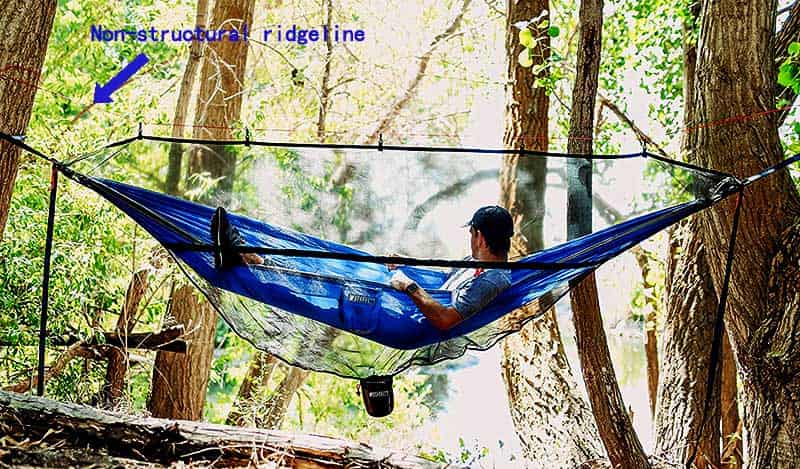
What Is a Tarp Ridgeline
A tarp ridgeline is different from the hammock ridgeline. It is strung tight above the hammock by being wrapped around trees and is only used for setting a rain tarp. Tarp ridgelines have two types: split ridgeline and continuous ridgeline (known as “CRL”), each type has its own advantages. Anyway, do not confuse tarp ridgeline with hammock ridgeline.
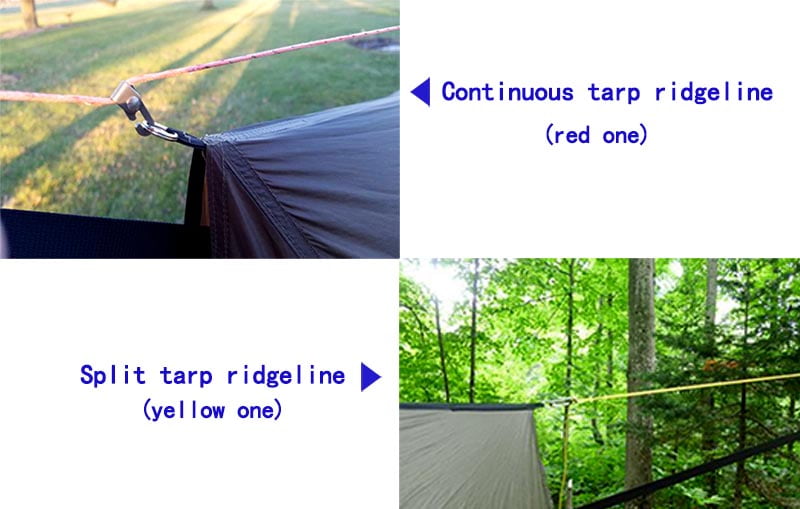
What Are the Benefits of Using a Structural Hammock Ridgeline
Ensures a Minimum Sag of the Hammock, No Matter How Tight Your Hammock Suspension Is
As we know, a 30-degree angle is the most optimal hanging angle for a hammock. It creates a comfortable sag for a diagonal lay. But if the trees are far apart, you have to hang the hammock at a smaller angle. Using a structural ridgeline, you will always get the same level of sag and a comfortable sleeping experience.
Protects Your Hammock from Tearing When Hanging at a Shallow Angle
For a 30-degree hanging angle, the hammock gets the same stress as your body weight. Without a doubt, all hammocks can withstand that force. However, when the hanging angle starts to decrease, the hammock will gradually receive more and more stress, potentially becoming endless if the angle is 0. Using a structural hammock ridgeline, most pressure will be put on the ridgeline, which has a much higher breaking strength than the hammock, helping reduce the pressure and prevent it from being stretched out.
You Can Hang an Organizer, Bug Net, and Other Items on It
With an organizer, you can keep your smartphone, keys, books, glasses, and other small items within reach, avoiding the hassle of searching around and preventing them from poking through the hammock. Some emergency kits, like a whistle and lamp, can also be hung on it. In summer camping, you can put your clothes on it, like a convenient shelf.
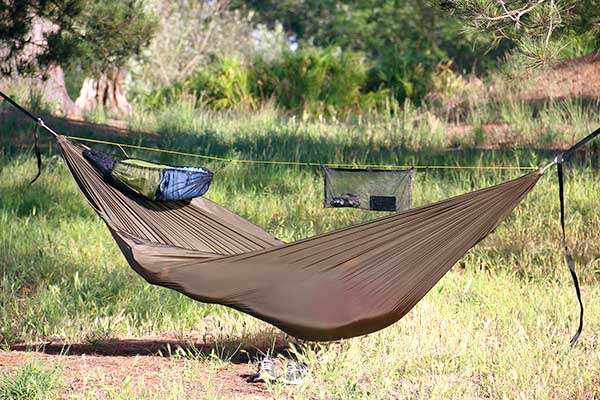
If you can accept the bug net setup close to your face, and your bug net is loose enough to put over the ridgeline and withstand the pulling stress, that is good to go, and there is no need to use an extra non-structural ridgeline.
How Many Types Do Structural Ridgelines Have
Although the structural hammock ridgeline has a simple appearance, it actually comes in two types: fixed and adjustable, in several forms:
Fixed Length Ridgeline
A fixed length SRL is simple, with two spliced loops at each end of the cord. You can buy or make it in your ideal length.
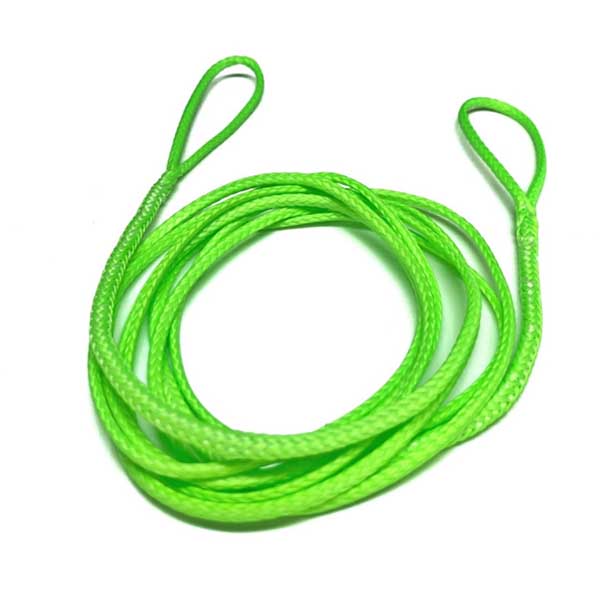
Adjustable Ridgeline
An adjustable length SRL has two forms: whoopie sling style and UCR (Utility Constrictor Rope) style. They both have loops at each end and can be used for the hammock suspension system and ridgeline. UCR is made of two pieces of separate cords, with a prusik knot to keep tension, while a whoopie sling is made of a continuous piece of cord.
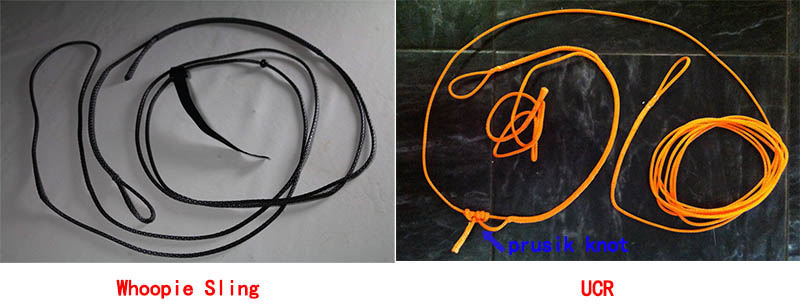
For recommendations, it depends on your preference. Both types are easy to add to the hammock and are widely used by hammock hangers. An adjustable ridgeline is suitable for a new hammock and unknown or complicated camping places. You can adjust its length to find your sweet sagging spot. Once you’ve found the perfect length, you can switch to the fixed ridgeline, which can also save on weight and bulk for your whole hammock system.
How Long Should the Structural Hammock Ridgeline Be?
The usual length of a ridgeline is 83% of the hammock body length (one end to the other, without continuous loops and biners). That’s the most common choice for hammock hangers. For an 11′ long hammock, the length of the SRL should be 110″; for a 10′ long hammock, the length of the SRL should be 100″.
| Hammock Length (Feet) | Hammock Length (Inches) | 83% SRL (Inches) |
|---|---|---|
| 8 | 96 | 79.68 |
| 9 | 108 | 89.64 |
| 10 | 120 | 99.6 |
| 11 | 132 | 109.56 |
| 12 | 144 | 119.52 |
One thing to note is that there is no fixed 83% rule for the ridgeline. You should adjust the ridgeline’s length back and forth to find your sweet spot. That’s why it is recommended to have at least one adjustable ridgeline for your new hammock. Once you find the length for the perfect sag, you can change the adjustable one to the fixed one.
Is Your Hammock Ridgeline Too Taut or Loose
If you use the 83% rule for your ridgeline length, depending on your suspension length, the ridgeline will be somewhat taut or loose. The optimal situation is that the ridgeline is tight enough and can be triggered with two fingers.
If the ridgeline is too taut, just release some length of the suspension system, and the hanging angle will become greater. However, if the angle is much higher than 30 degrees, the ridgeline will start loosening, and the ridgeline will become useless for a consistent sag.
On the other hand, if the ridgeline is too loose, just shorten some length of the suspension system.
What’s the Material of Structural Hammock Ridgeline
There are three most used materials for structural ridgelines: Zing-It or Lash-It, Dynaglide, and Amsteel.
7/64″ Amsteel has a 1600 lbs breaking strength, making it absolutely safe for hammock ridgelines and even a little bit overkill. It’s most used for hammock suspension, like continuous loops.
Zing-It and Lash-It are made of the same material: Dyneema fiber. Zing-It is yellow or red, Lash-It is grey; otherwise, there is no difference between them. 1.75 mm Zing-It/Lash-It has a 500 lbs breaking strength. It’s thinner and more lightweight than Amsteel.
Dynaglide is another option for ridgelines, with breaking strength and weight between Amsteel and Zing-It/Lash-It. 1.8mm Dynaglide has an 850 lbs breaking strength.
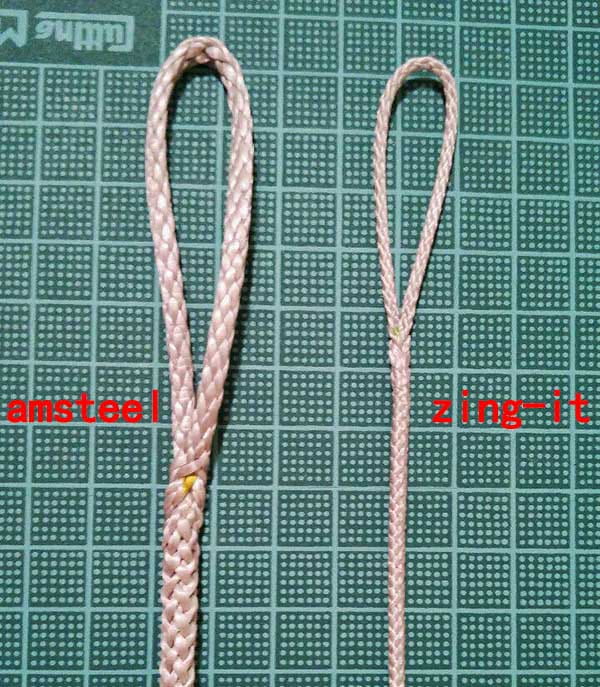
These three materials are all ideal for structural ridgelines. The most recommended one is Amsteel, although it’s the heaviest among all, the extra weight has far more value than the other lighter ones provide. If you don’t know the distribution of the trees at your hammocking spot, you might hang the hammock at a shallow angle when the trees are too far apart. Accordingly, the stress on the ridgeline will become much higher, and you will risk breaking the ridgeline when using Zing-It/Lash-It.
On the other hand, if you know the camping spot, can control the hanging angle in a reasonable range, and don’t rely on the structural ridgeline to support the pressure on the hammock, it should be fine to choose Zing-It/Lash-It. It can reduce the weight of your whole hammock system, especially if you’re a weight weenie.
Can I Use a Paracord for Structural Ridgeline
No, paracord is not suitable for a structural hammock ridgeline because of its stretch factor, especially when getting wet. Materials for SRL should be non-stretchy. The above three materials—Amsteel, Dynaglide, and Zing-It—all have none or minimal stretch, which is why they are used for structural ridgelines.
How to Tie a Structural Ridgeline to the Hammock
For a gathered-end camping hammock, there are two forms: whipped end and sewn channel. Each form has continuous loops or other ropes bound to the hammock body, then connected to the suspension system, and these ropes are the place to tie the ridgeline.
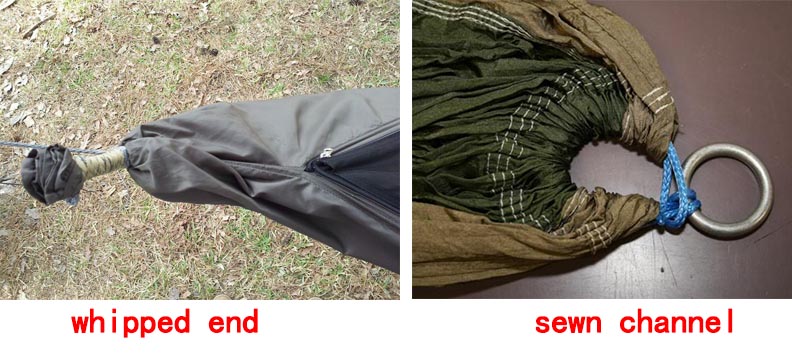
For a sewn channel hammock, first untie the knot of the continuous loop or whoopie sling (if you use this) which is lark’s headed on the hammock, slip the ridgeline’s loop (fixed or adjustable) over the continuous loop or whoopie sling, repeat the process on the other end, then tie the continuous loop or whoopie sling.
For a whipped end hammock, you can tie the ridgeline to the continuous loop, suspension ring/buckle, or just loop around the whipping end. It is not limited to a specific place, so try out several attachment points and find the better one.
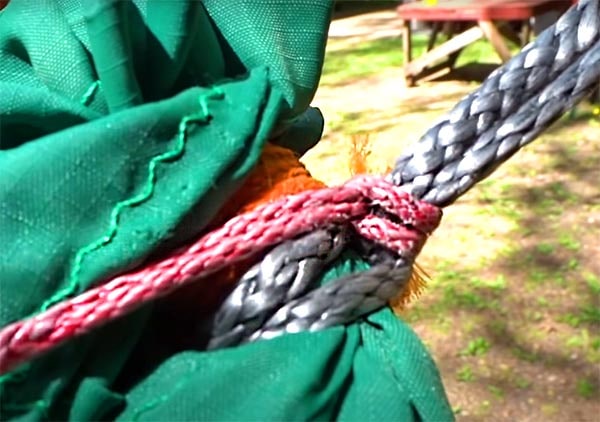
If you don’t like knots or want to remove the ridgeline off the hammocks quickly, you can try a small biner, like DutchWare Ridgeline Biners, to connect the continuous loop and structural ridgeline.
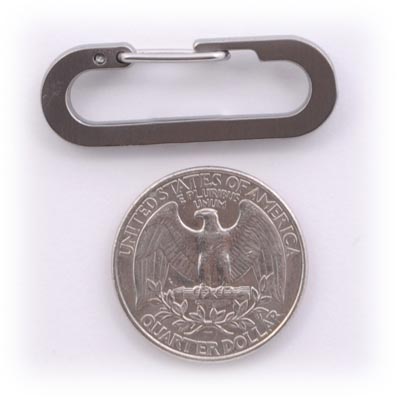
Do I Really Need a Structural Hammock Ridgeline
From the above introduction of the structural ridgeline, the conclusion is clear: YES.
It’s just a piece of rope attached to your hammock, won’t add too much weight and bulk, and can make a consistent sag and function as a shelf for hanging items, creating much more value than you might expect for its “little role.”
